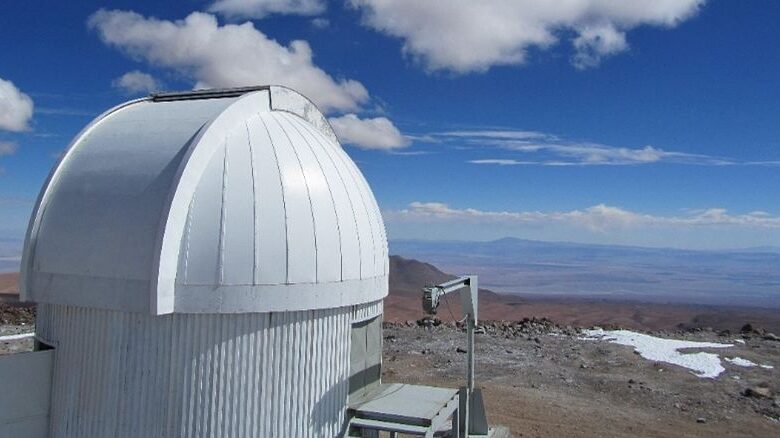Chile’s Andes Mountains hosts world’s highest astronomical observatory
The TAO is the highest astronomical observatory on Earth, perched at an astounding 5,640 meters (18,500 feet) above sea level

The University of Tokyo Atacama Observatory (TAO) has formally opened its doors or rather, its lens to the universe, marking a significant milestone for astronomical study. The TAO is the highest astronomical observatory on Earth, perched at an astounding 5,640 meters (18,500 feet) above sea level atop the Cerro Chajnantor mountain in Chile’s Andes.
The construction of the TAO was a significant undertaking. It required careful planning, teamwork, and overcoming obstacles on both the political and technical fronts over 26 years. The Atacama Desert, where the observatory is situated, is well known for its dry environment and thin atmosphere, which are unfriendly to people but perfect for infrared telescopes. With the TAO’s location, observations of the universe can be made with unmatched clarity, free from the distortion caused by moisture in Earth’s atmosphere.
The TAO is furnished with two cutting-edge scientific instruments intended for infrared observations of the universe, as well as a 6.5-meter telescope. Astronomers will be able to examine exoplanet and galaxy evolution in unprecedented depth because of this technology. One of the equipment, called SWIMS, is designed to take pictures of early universe galaxies, providing insight into how they were formed from gas and dust, an aspect of astrophysics that is still mostly unknown.
The TAO’s establishment is evidence of global cooperation and regard for indigenous people. Leading the TAO project since 1998 is Professor Yuzuru Yoshii, who stressed the value of communicating with the native Likan Antai people and making sure their rights and opinions were taken into consideration. The achievement of this ambition required the cooperation of the Chilean government, regional colleges, and even the country’s health ministry to guarantee secure working conditions at such high elevations.
The Atacama Desert’s high altitude, dry environment, and clear skies make it an ideal site for astronomical observatories. The following are some of the well-known observatories in the Atacama Desert:
ALMA Observatory: One of the most ambitious astronomy projects in the world is the Atacama Large Millimeter/submillimeter Array (ALMA). ALMA is a complex of 66 high-precision radio telescopes that are situated at an elevation of more than 16,000 feet and are intended to investigate the origin of stars and planets.
Paranal Observatory: Run by the European Southern Observatory (ESO), the Paranal Observatory is home to the Very Large Telescope (VLT). It is among the most advanced observatories for visible-light astronomy and has made a substantial contribution to several noteworthy scientific findings.
Las Campanas Observatory: Known for its enormous Magellan telescopes, this observatory has played a significant role in the study of the far-off universe and has helped us comprehend dark energy and dark matter.
Cerro Tololo Inter-American Observatory: This observatory is home to an extensive collection of instruments and telescopes, one of which is the Blanco 4-meter telescope, which has been instrumental in revealing the universe’s speeding expansion.
One of the first international observatories in Chile, La Silla Observatory is run by ESO and is home to many optical telescopes with mirrors as large as 3.6 meters.
You might also be interested in – India’s athletes won More medals in Tokyo than all previous Paralympics combined, yet not appreciated



